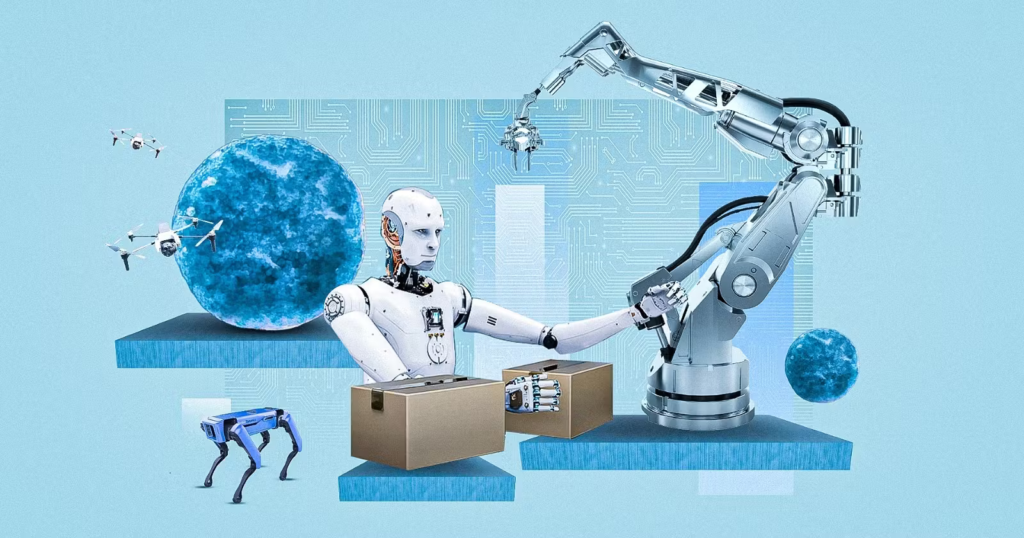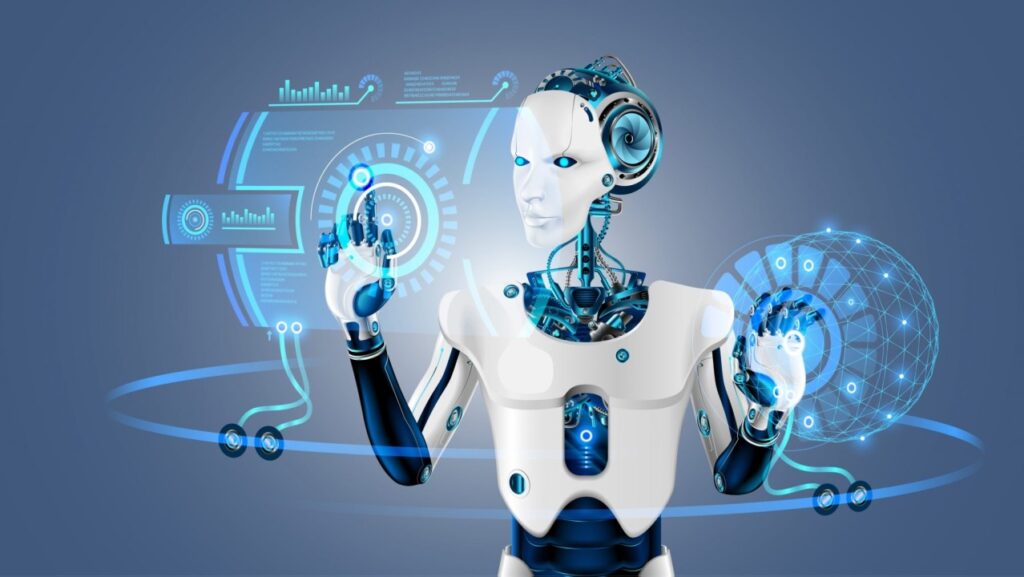AI is expanding, with subfields like gadgets gaining knowledge of and robotics pushing the bounds of device competencies. Machine mastering is crucial for AI advancements, allowing machines to analyze and adapt to information. Robotics, traditionally reliant on pre-programmed instructions, faces limitations in complicated environments. Machine learning in robotics is bridging this gap, creating a new era of intelligent machines capable of learning, adapting, and performing sophisticated tasks.
Machine Learning: The Engine Powering Intelligent Machines
Machine learning, a cornerstone of AI, empowers machines to examine facts without express programming. It’s like a pupil diligently analyzing, continuously soaking up information, and refining their know-how. This mastering system can take various bureaucracies:
Supervised mastering: Supervised studying involves machine learning to map inputs to outputs, allowing it to make predictions on new, unseen records, just like a teacher guiding a student via categorized information.
Reinforcement mastering: Think of a pupil learning through trial and error. Through reinforcement learning, machines interact with their environment, receiving rewards for desired actions and penalties for undesired ones. This feedback loop allows them to learn by exploration and exploitation, continually refining their behavior to maximize rewards.
It utilizes various learning techniques to allow machines to become aware of patterns, make predictions, and continuously beautify their overall performance through the years. This transformative electricity is obvious in various industries:
Finance: Machine getting-to-know algorithms can analyze massive economic datasets to hit upon fraud, expect marketplace trends, and personalized funding pointers.
Healthcare: Machine-gaining knowledge is applied for early disease detection, personalized treatment plans, and drug discovery by analyzing medical photos.
Transportation: Self-driving cars, a prime example of machine learning in robotics, utilize various algorithms for obstacle detection, path planning, and real-time decision-making in complex traffic environments.
Machine getting to know, with its notable capacity to research and adapt, is paving the manner for a future filled with clever machines that could help us, assign us, or even study alongside us.
The Rise of Robotics: From Static Machines to Dynamic Partners

Robotics, the engineering discipline dedicated to the layout, production, operation, and alertness of robots, has revolutionized automation throughout various sectors. From the meeting lines of factories to the surgical suites of hospitals, robots have transformed how we work and interact with the world. However, conventional robots, even as green in acting pre-programmed responsibilities, faced boundaries. Their rigid programming frequently restricted them to controlled environments and rendered them incapable of adapting to sudden modifications.
This is where machine learning in robotics emerges as a game-changer. Researchers are actively developing a new generation of robots that can overcome the limitations of their predecessors. Equipped with machine learning, these robots will exhibit adaptive behavior, paving the way for a more dynamic and intelligent future.
From Static to Smart: How Machine Learning Empowers Robotics
Robots have transformed industries, but their pre-programmed nature limited them. Now, machine learning in robotics is creating a revolution.
Machine getting to know equips robots with new talents:
Seeing and greedy: Robots are now capable of performing tasks like delicate assembly or cooking with greater precision.
Navigating on their very own: They can circulate via complex environments, avoiding barriers and adapting to changes, best for search and rescue or shipping drones.
Making their very own selections: Robots can provide real-time, expert solutions to patients, aid surgeons, and collaborate with humans in factories through learning from experience.
This effective aggregate is already impacting numerous fields:
Manufacturing: Robots with system gaining knowledge of carrying out meeting responsibilities extra successfully and as it should be.
Logistics: Autonomous robots navigate warehouses, manipulate stock, and optimize approaches.
Healthcare: Machine getting to know-powered robots help surgeons, perform delicate methods, or even offer rehabilitation therapy.
The future of machine learning in robotics is bright, promising intelligent machines that learn, adapt, and collaborate, shaping a future filled with possibilities.
The Road Ahead: Challenges and Considerations
While the potential of machine learning in robotics is immense, challenges remain.
Ethical considerations concerning AI and robotics development, which include bias and transparency, should be addressed proactively. Ensuring the safety and reliability of self-reliant machines is paramount, requiring rigorous testing and clean recommendations.
The development and ethical considerations of machine learning in robotics are crucial for a future that benefits all.
A Brighter Future: The Promise of Machine Learning and Robotics
The future of machine learning in robotics holds immense potential to revolutionize various aspects of our lives.
Imagine personal robots helping us with each day’s duties, offering companionship, or even offering to take care of the elderly. Advanced robots, ready with device mastering, may want to project into unexplored territories, aid in disaster response, or maybe help in area exploration. In numerous industries, collaborative robots, working alongside human beings, ought to bring in a new technology of increased productiveness and performance.
Continuous research and development are essential in the field of machine learning in robotics, with a focus on ethical considerations and responsible integration to ensure technology serves humanity for the greater good and fosters collaboration and innovation.


